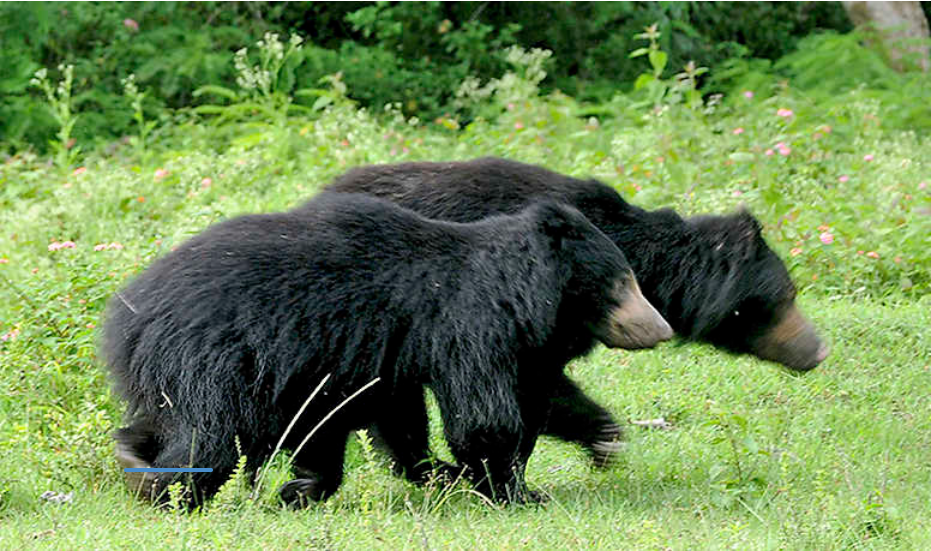
The sloth bear is not a sloth at all. It is possible that the bear’s arboreal habits and their long claws led to their original misclassification as sloths in the 1700s. Its body is 5 to 6 feet long, and it has a thick, shaggy coat of fur, which varies in color from auburn to black. Its chest is marked with a distinctive white V, and it has light-colored snout. Males, weighing 175 to 310 pounds, are larger than females, which weigh only 120 to 210 pounds. Its tail is 6 to 7 inches long, the longest in the bear family, and its footprint is very similar to that of a human. Due to the warm climate in which the sloth bear resides, it does not hibernate during the winter, as many northern bear species do.
Habitat
The sloth bear inhabits the tropical lowland forests of India, Nepal, Bhutan, Sri Lanka and Bangladesh and is sometimes found in tall grasslands that provide dense cover.

Feeding Habits
While sloth bears are true bears, they have a number of unique adaptations to support their primarily insectivorous lifestyle. They have no upper incisors, which allow their long tongue to slip through and suck up insects. This adaptation also allows them to use their lower incisors to scrape away bark from trees to get at the insects below. Their 4-inch-long curved claws are also designed for digging for grubs and tearing apart termite mounds. To prevent termites and ants from crawling into their noses to defend their nests, the sloth bear’s nostrils can close tightly as a barrier. During the dry season, nearly 95 percent of a sloth bear’s diet is insects. However, during the wet season, they will climb high into the branches of trees to gather fruits, flowers and honeycombs.
Reproduction
The gestation of a female sloth bear typically lasts seven months, after which two cubs are born, although the mother will sometimes give birth to one or three young. The newborns stay in their den until they are about 2 or 3 months old and will remain by their mother’s side until at least 2 years of age. Sloth bears will fiercely defend their territories and their young, and despite having “sloth” in their name, the speed at which they can attack is far quicker than the speed at which a human can run away.
Conservation
Many human activities threaten the sloth bears’ survival. Poaching for the bears’ gallbladder, which is used in traditional medicine, is a rampant problem. Habitat loss and fragmentation in the Indian subcontinent are also severe threats, as bears become displaced from their forest homes. Cubs may face risks from predators such as tigers, leopards and wolves, but mothers will viciously defend their young with the aid of their long, sharp claws. The sloth bear’s conservation status is currently listed as vulnerable by the International Union for the Conservation of Nature (IUCN).


